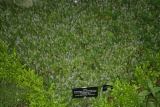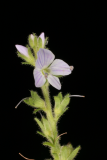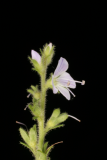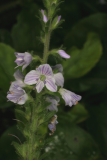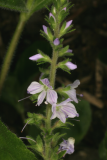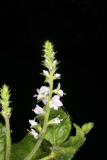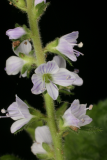Additional notes (click to expand)
Medicinal
Culpeper: ‘Veronica. See Betonica Pauli.’ He writes of the latter: ‘Betonica pauli. Paul’s Betony or male Lluellin, to which add Elatine, or female Lluellin, which comes afterwards ... are profitable in wounds, helps foul filthy eating cankers.’
Culpeper, Nicholas. (1650). A Physical Directory . London, Peter Cole.
Notes: It is still used in herbal medicine to treat chronic skin conditions.
Oakeley, Dr. H. F. . (2013). The Gardens of the Pharmacopoeia Londinensis.
link
Nomenclature
OTHER COMMON NAMES:FLUELLEN;GROUND-HEEL;GROUND-HELE;GYPSYWEED;HEATH SPEEDWELL
The Royal Horticultural Society Horticultural Database, available at www.rhs.org.uk
Family changed from SCROPHULARIACEAE to
PLANTAGINACEAE 10/02/2021 AT
Plants of the World online, Kew Science http://plantsoftheworldonline.org/taxon/urn:lsid:ipni.org:names:812402-1
link
Other use
Veronica officinalis L. Scrophulariaceae Speedwell. Distribution: Europe. Gerard (1633) calls this the female Fluellen, or Speedwell and Elantine. Pena and Lobel (1570/1) report how a barber cured a man whose nose was being eroded off by giving him Elantine to drink and by applying a poultice of the crushed herb to the sore - after learned physicians and surgeons had said the only remedy was to cut the nose off. Gerard lists several Veronica but all have a property of healing wounds.
Oakeley, Dr. Henry F. (2013). Wellcome Library notes.
link
Veronica officinalis L.
Family: PLANTAGINACEAEGenus: Veronica
Species: officinalis L.
Common names: Speedwell
Pharmacopoeia Londinensis name: Veronica
Distribution summary: Europe, W.Asia, Caucasus
Habit: Perennial
Hardiness: H5 - Hardy; cold winter
Garden status: Currently grown
Garden location: Pharmacopoeia Londinensis 1618 'Leaves' (HSE 6)
Reason for growing: Medicinal
